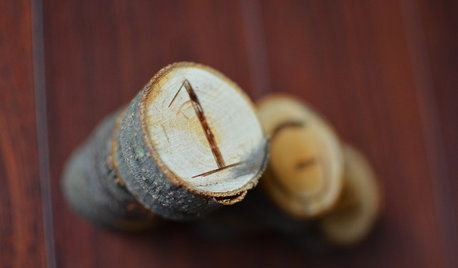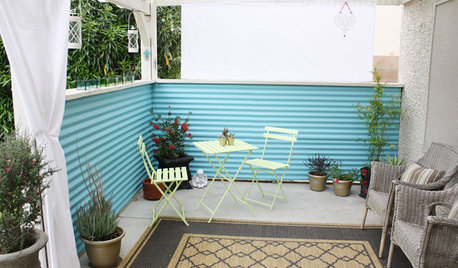We lost some trees
Stoutcat
12 years ago
Related Stories

FEEL-GOOD HOMEThe (Lost) Art of Laziness
Do you go to bed with to-do lists flashing through your head? Try one of these ideas to give yourself a break
Full Story
KITCHEN DESIGNHow to Lose Some of Your Upper Kitchen Cabinets
Lovely views, display-worthy objects and dramatic backsplashes are just some of the reasons to consider getting out the sledgehammer
Full Story
DECORATING GUIDESFeel Free to Break Some Decorating Rules
Ditch the dogma about color, style and matching, and watch your rooms come alive
Full Story
LIFEYou Said It: ‘Some Ask Why, Others Why Not?’ and Other Houzz Quotables
Design advice, inspiration and observations that struck a chord this week
Full Story
GARDENING GUIDESTree Care: Common Tree Diseases and What to Do About Them
Learn to recognize trees that may be affected by diseases or pests so you can quickly take action
Full Story
HOME TECHAll Is Not Lost: New Gadgets Help You Find Your Stuff
If you lose it when you lose things around the house (and who doesn't?), one of these wireless finders may be to your gain
Full Story
GARDENING GUIDESHow to Keep Your Citrus Trees Well Fed and Healthy
Ripe for some citrus fertilizer know-how? This mini guide will help your lemon, orange and grapefruit trees flourish
Full Story
CRAFTS7 Ways to Upcycle a Fallen Tree
When a tree falls, turn its branches into rustic toys, accessories and holiday décor
Full Story
New Ways to Carve Out Some Solitude
Avoid That Fishbowl Feeling With Slats, Drapes — and a Paint Marker, Too
Full Story
GARDENING GUIDES5 Best-Behaved Trees to Grace a Patio
Big enough for shade but small enough for easy care, these amiable trees mind their manners in a modest outdoor space
Full StoryMore Discussions








tree_oracle
pixie_lou
Related Professionals
Surprise Landscape Architects & Landscape Designers · Canton Landscape Contractors · Choctaw Landscape Contractors · Cicero Landscape Contractors · Las Vegas Landscape Contractors · Milford Landscape Contractors · Plymouth Landscape Contractors · Rancho Santa Margarita Landscape Contractors · West Allis Landscape Contractors · King of Prussia Decks, Patios & Outdoor Enclosures · Lakewood Decks, Patios & Outdoor Enclosures · Larkspur Decks, Patios & Outdoor Enclosures · Little Rock Decks, Patios & Outdoor Enclosures · Rogers Decks, Patios & Outdoor Enclosures · West Chester Decks, Patios & Outdoor Enclosuresgardenweed_z6a
diggingthedirt
NHBabs z4b-5a NH
tree_oracle
StoutcatOriginal Author
tree_oracle
StoutcatOriginal Author
Steve Massachusetts
WendyB 5A/MA
prairiemoon2 z6b MA
terrene
prairiemoon2 z6b MA
terrene
prairiemoon2 z6b MA
tree_oracle
WendyB 5A/MA
tree_oracle